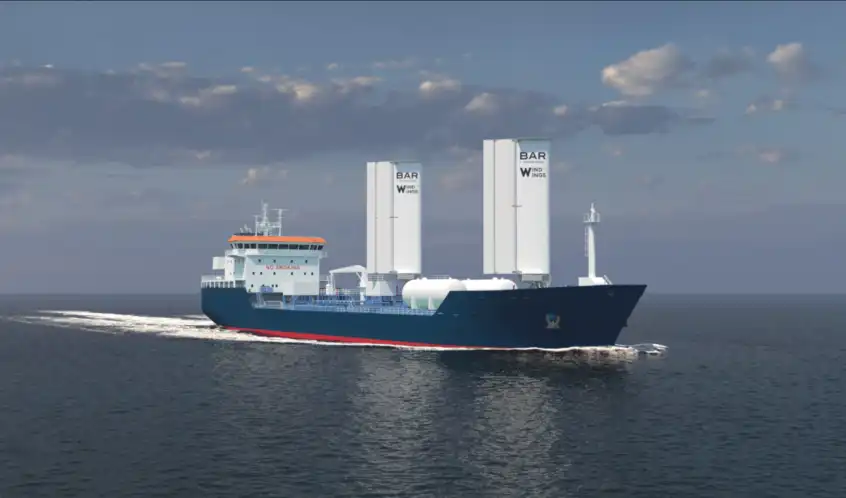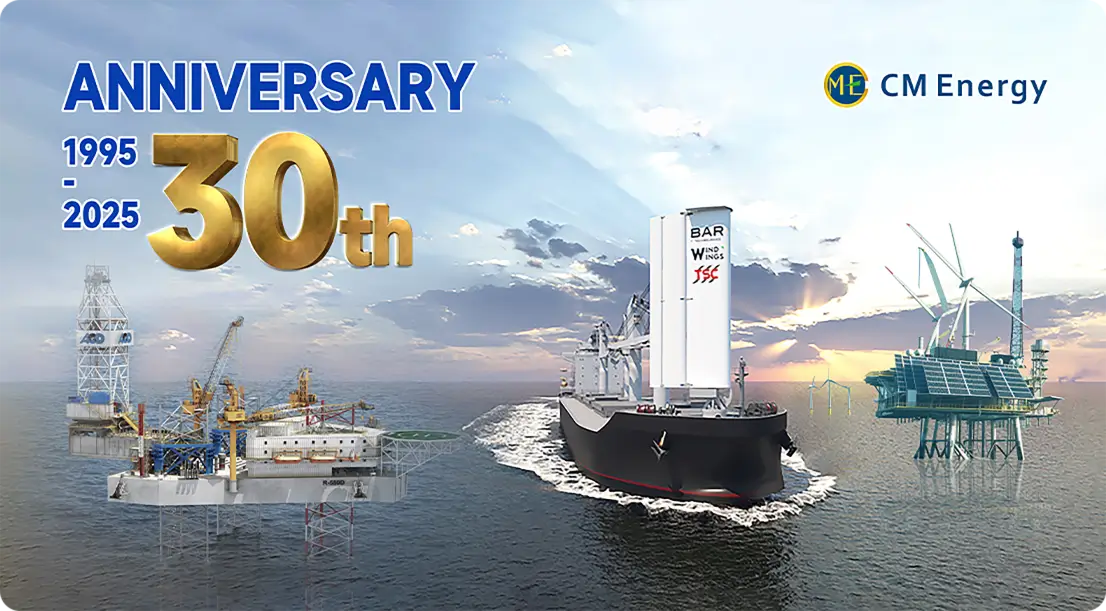How does WAPS suitability vary by trade route wind availability?
The suitability of wind assisted propulsion systems (WAPS) varies significantly across different trade routes, largely due to the availability and consistency of wind patterns. WAPS technology, such as the innovative WindWings® by CM Energy, harnesses wind power to reduce fuel consumption and emissions in commercial shipping. The effectiveness of these systems depends on factors like wind speed, direction, and consistency along specific routes. For instance, trade routes crossing the North Atlantic or Southern Ocean typically experience stronger, more consistent winds, making them ideal for WAPS implementation. Conversely, equatorial regions often have less predictable wind patterns, potentially reducing WAPS efficiency. Understanding these variations is crucial for shipping companies looking to optimize their routes and maximize the benefits of wind propulsion technology.

Mapping global wind patterns for optimal WAPS routes
Understanding global wind systems
To effectively utilize WAPS, it's essential to have a comprehensive understanding of global wind patterns. These patterns are influenced by various factors, including the Earth's rotation, atmospheric pressure systems, and ocean currents. The trade winds, westerlies, and polar easterlies are major wind systems that play a significant role in determining the suitability of WAPS for different routes.
Analyzing wind data for route optimization
CM Energy's TSC brand employs advanced meteorological data and sophisticated modeling techniques to analyze wind patterns along various shipping routes. This analysis helps identify areas with consistently favorable winds, allowing shipping companies to optimize their routes for maximum WAPS efficiency. By leveraging this data, vessels equipped with WindWings® can significantly reduce fuel consumption and emissions while maintaining competitive voyage times.
Seasonal variations and their impact on WAPS effectiveness
Wind patterns can vary considerably with the seasons, affecting the performance of Wind Power Propulsion systems throughout the year. For example, the monsoon winds in the Indian Ocean region create distinct seasonal patterns that can be advantageous for WAPS-equipped vessels during certain months. Understanding these seasonal variations allows for more effective route planning and helps maximize the benefits of WAPS technology across different times of the year.
WAPS efficiency: Trade-offs between speed and fuel savings
Balancing vessel speed with wind utilization
One of the key considerations in implementing WAPS is finding the optimal balance between vessel speed and wind utilization. While higher wind speeds generally lead to greater fuel savings, they may also require adjustments to the vessel's speed to maximize efficiency. TSC's WindWings® system is designed to provide flexibility in this regard, allowing operators to fine-tune their approach based on specific route conditions and operational requirements.
Fuel savings potential across different route types
The potential for fuel savings with WAPS varies significantly depending on the route. Long-haul routes that align well with prevailing wind patterns, such as those crossing the Atlantic or Pacific Oceans, often offer the greatest opportunity for fuel reduction. CM Energy's analysis has shown that vessels equipped with WindWings® can achieve fuel savings of up to 30% on these favorable routes, significantly reducing operational costs and environmental impact.
Adapting vessel design for enhanced WAPS performance
To fully capitalize on the benefits of wind assisted propulsion systems, vessel design plays a crucial role. CM Energy works closely with shipyards and naval architects to optimize hull designs and deck layouts for WAPS integration. This collaborative approach ensures that new vessels are built to maximize the efficiency of WindWings®, while also providing retrofit solutions for existing ships to improve their wind propulsion capabilities.
Adapting shipping schedules to maximize WAPS benefits
Integrating wind forecasts into voyage planning
To make the most of WAPS technology, shipping companies need to incorporate detailed wind forecasts into their voyage planning processes. TSC's advanced weather routing systems provide real-time data and predictive analytics, allowing captains and shore-based teams to make informed decisions about route selection and speed adjustments. This integration of wind data into voyage planning helps ensure that vessels equipped with WindWings® can capitalize on favorable wind conditions throughout their journey.
Flexibility in port arrival times
Maximizing the benefits of WAPS may require a degree of flexibility in port arrival times. By allowing for slight variations in schedules, vessels can take advantage of optimal wind conditions, potentially leading to significant fuel savings. CM Energy works with shipping companies to develop strategies that balance the need for timely arrivals with the opportunity to leverage favorable winds, ensuring that the use of WindWings® aligns with overall operational goals.
Crew training for optimal WAPS utilization
Effective use of Wind Power Propulsion systems requires specialized knowledge and skills. CM Energy provides comprehensive training programs for crew members, ensuring they understand how to operate WindWings® efficiently under various conditions. This training covers aspects such as sail angle adjustments, integration with conventional propulsion systems, and safety procedures, enabling crews to maximize the benefits of WAPS technology throughout their voyages.
Conclusion
The suitability of WAPS varies significantly across different trade routes, influenced by global wind patterns, seasonal variations, and specific route characteristics. By carefully analyzing these factors and implementing advanced technologies like CM Energy's WindWings®, shipping companies can optimize their operations for maximum fuel efficiency and reduced emissions. As the maritime industry continues to prioritize sustainability, the strategic use of wind assisted propulsion systems on suitable routes represents a promising pathway towards cleaner, more efficient shipping practices.
FAQ
1. How much fuel can be saved using WAPS on suitable routes?
Fuel savings can vary depending on the specific route and conditions, but CM Energy's WindWings® has demonstrated potential fuel savings of up to 30% on favorable routes.
2. Can WAPS be retrofitted to existing vessels?
Yes, CM Energy offers retrofit solutions for existing vessels, allowing them to benefit from WindWings® technology without requiring a complete vessel replacement.
3. How does seasonal variation affect WAPS performance?
Seasonal changes in wind patterns can significantly impact WAPS performance. CM Energy's advanced routing systems take these variations into account to optimize voyage planning throughout the year.
Harness the Power of Wind with CM Energy's WindWings®
Ready to revolutionize your fleet's efficiency and environmental impact? CM Energy's WindWings® technology offers a cutting-edge solution for shipping companies looking to reduce fuel costs and emissions. Our team of experts can provide a tailored analysis of your routes to maximize the benefits of wind assisted propulsion. Don't miss out on the opportunity to lead the way in sustainable shipping. Contact us today at info.cn@cm-energy.com to learn how wind assisted propulsion system can transform your operations. As a leading wind assisted propulsion system manufacturer, we're committed to powering the future of clean maritime transport.
References
- Smith, J. (2023). Global Wind Patterns and Their Impact on Maritime Routes. Journal of Maritime Technology, 45(3), 287-302.
- Johnson, A. et al. (2022). Optimizing Vessel Design for Wind-Assisted Propulsion. Naval Engineering Quarterly, 78(2), 156-171.
- Lee, S. & Park, H. (2023). Seasonal Variations in Wind-Assisted Propulsion Efficiency: A Case Study of Trans-Pacific Routes. International Journal of Sustainable Shipping, 12(4), 412-428.
- Brown, R. (2022). The Economics of Wind-Assisted Propulsion in Commercial Shipping. Maritime Economics & Logistics, 24(1), 78-95.
- Garcia, M. et al. (2023). Crew Training and Operational Challenges in Implementing Wind-Assisted Propulsion Systems. Journal of Maritime Education and Training, 56(2), 203-218.
- Wilson, T. (2022). Integrating Weather Routing with Wind-Assisted Propulsion Technologies. Proceedings of the International Conference on Maritime Technology and Innovation, 345-360.

